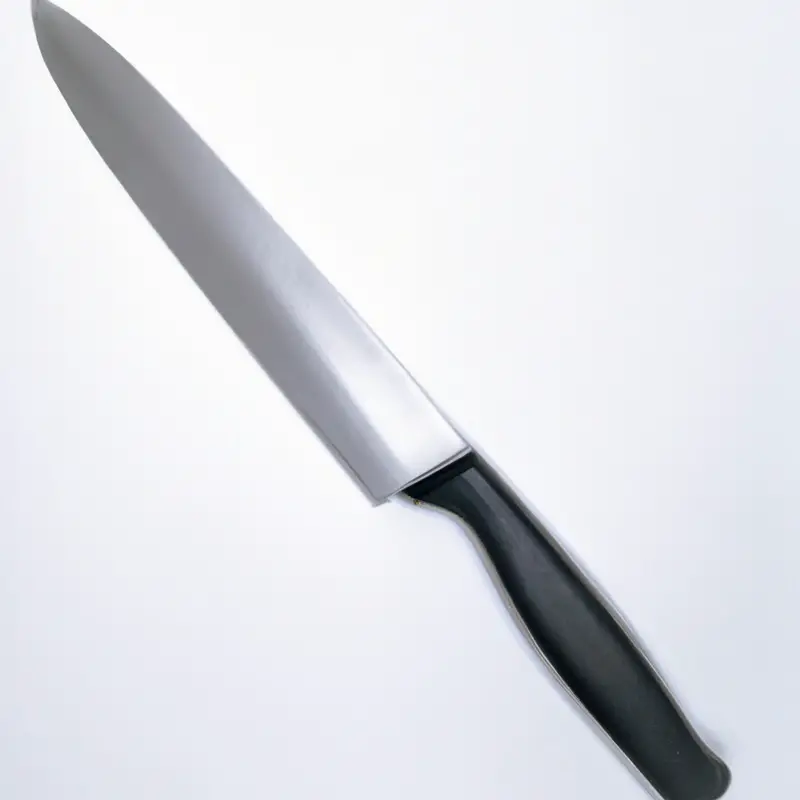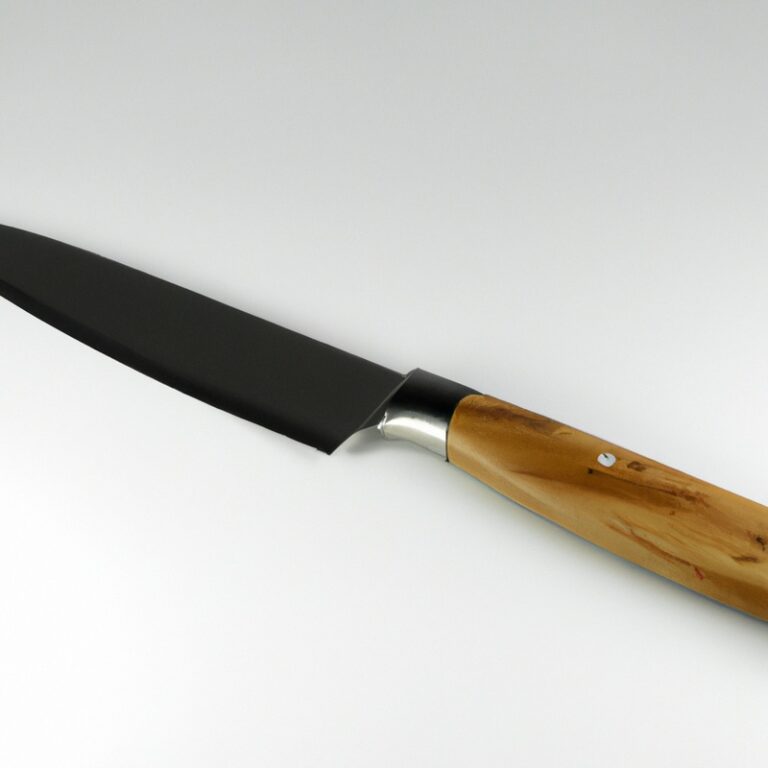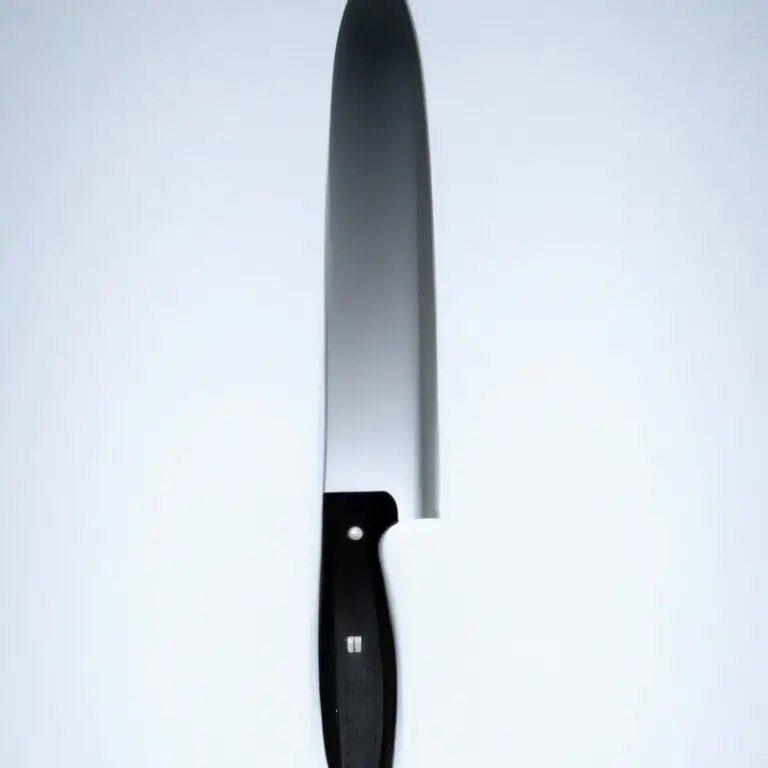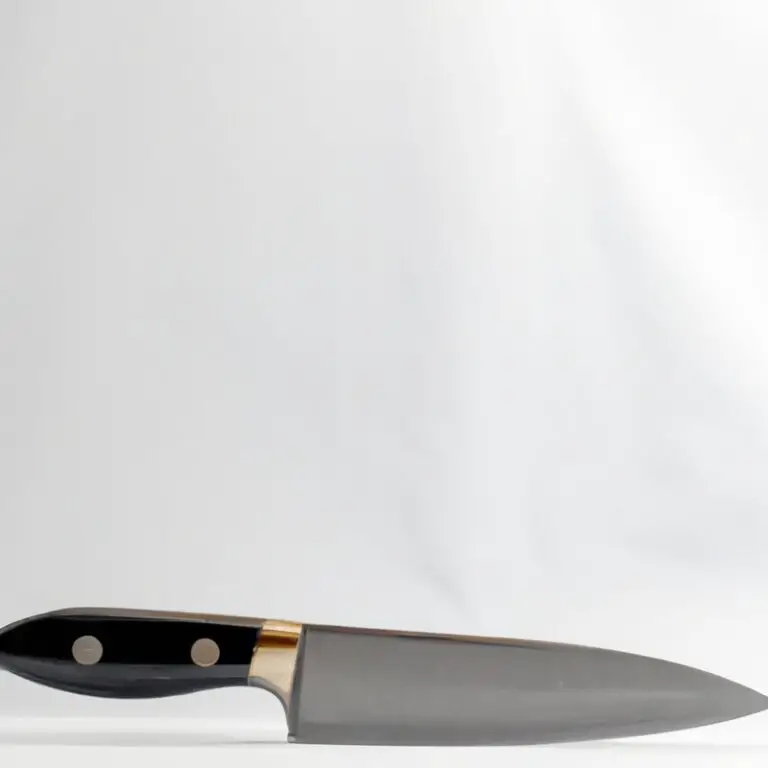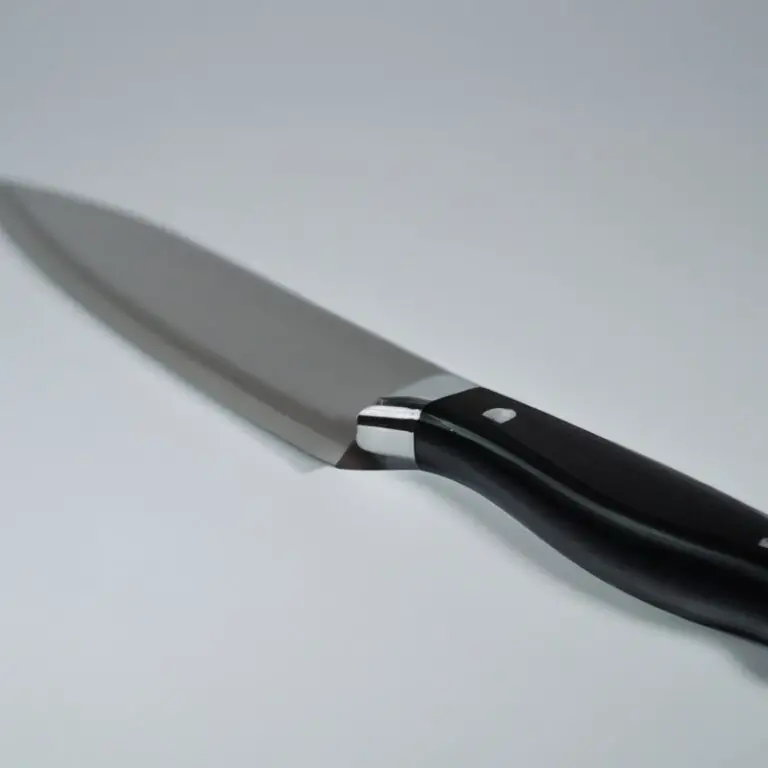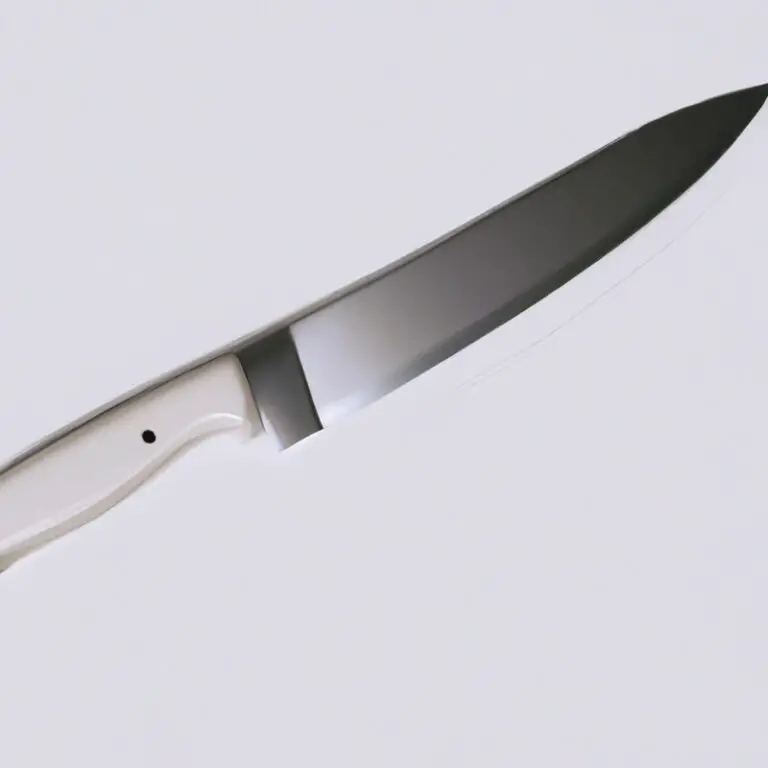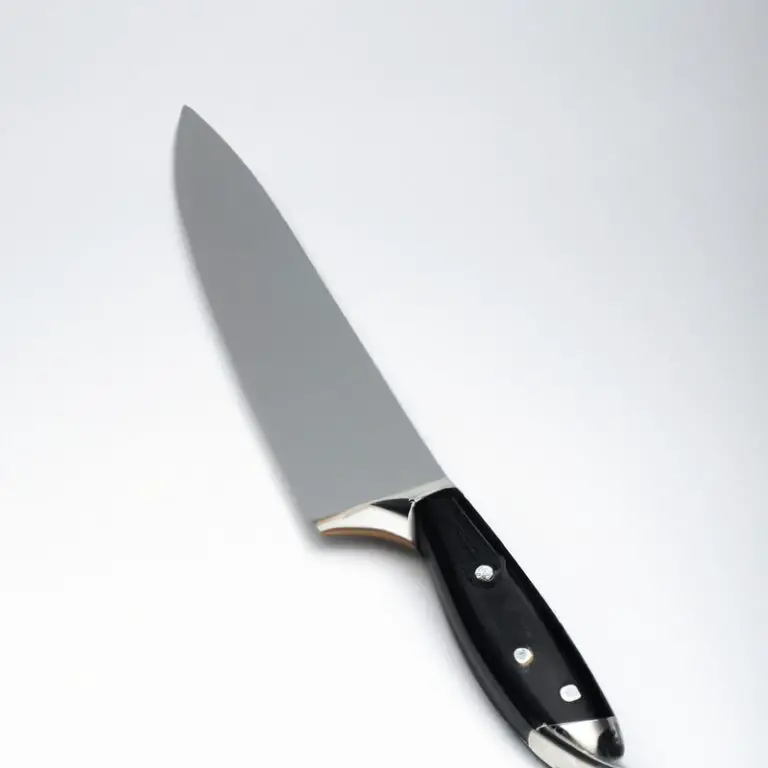How To Properly Hold a Chef Knife For Precision Work? – Slice With Confidence!
Key Takeaways:
- Grip the handle firmly and pinch the blade with your thumb and index finger to control the knife blade.
- Keep your fingers curled inward and place your other hand on the food being chopped or sliced to prevent injuries.
- Use a rocking motion when chopping or slicing for more precision and control.
- Always keep the knife sharp and maintain a proper grip to avoid accidents and ensure efficient cutting.
As a chef, your knife is one of the most important tools in your arsenal. But simply owning a high-quality chef knife won’t make you a better chef – you also need to master the proper techniques for holding and using it.
In this guide, I’ll walk you through everything you need to know about holding a chef knife for precision work, from understanding the different parts of the knife to finding a grip that works for you.
With a little practice, you’ll be able to chop, slice, and dice with ease, and impress your diners with your flawless technique.
| Description | Image | |
|---|---|---|
| 1 | The Grip (Handle Hold): The handle of a chef knife can be held in a variety of ways, but it is important to use a grip that feels comfortable and provides good control. The most common grips are the pinch grip with the thumb and index finger just below the blade’s heel and the handle grip where all four fingers wrap around the handle. Avoid a grip that is too tight as it can cause fatigue or soreness. | |
| 2 | The Angle (Blade Angle): The angle at which the blade meets the cutting board is crucial for precision work. A 20-degree angle is standard for most knives. Use the index finger of the non-knife holding hand to touch the blade’s spine and help guide the blade into the proper angle. | |
| 3 | The Rock (Blade Movement): When using a chef knife, the motion should be a rocking movement that allows the blade to cut through the food smoothly and efficiently. The wrist and elbow should move together to create a fluid motion. |
Understanding your Knife: Parts of a Chef Knife to Pay Attention to
To properly hold and use a chef knife, it is important to understand its various parts. The following are the key parts of a chef knife to pay attention to:
- Blade: The main cutting part of the knife. It can be straight or curved, and is usually made of stainless steel or high-carbon steel for durability and sharpness.
- Edge: The sharpened part of the blade that cuts through food. It should be sharpened regularly, as a dull edge can cause injuries and make cutting tasks more difficult.
- Spine: The top, thicker part of the blade opposite the edge. It can be used for tasks that require more force, such as breaking down a chicken.
- Handle: The part of the knife that is held by the user. It should feel comfortable and secure in the hand for optimal control and safety.
- Bolster: The thick part of the knife where the blade meets the handle. It provides balance and stability to the knife, and can also be used for tasks that require more force.
Understanding each part of the chef knife can help you choose the best knife for your needs, maintain and sharpen it properly, and use it safely and efficiently while cooking.
Why Proper Grip is Important when Holding a Chef Knife
Proper grip is crucial when holding a chef knife as it affects your accuracy, comfort, and safety. A loose or incorrect grip can lead to slipping or unsteady cuts, which is dangerous and can cause injury.
On the other hand, a proper grip ensures better control of the knife, making it easier to guide the blade along the food’s surface.
This leads to accurate and precise cuts, reducing waste and improving the dish’s presentation. Additionally, a proper grip helps to minimize hand fatigue, especially when working for extended periods, reducing the likelihood of injuries caused by muscle strain.
To maintain a proper grip, you need to hold the knife handle firmly with your dominant hand, ensuring a comfortable and secure grip.
You should also position your fingers and thumb correctly on the handle to provide ample support and exert the desired pressure required for cutting. Overall, a proper grip is essential when it comes to working with chef knives.
It helps to improve accuracy, comfort, and safety, resulting in better quality and more presentable dishes.
Finding the Correct Knife to Suit Your Needs
When it comes to finding the correct knife to suit your needs, it’s important to consider the following factors:
- Blade: The blade material, length, thickness and shape are important considerations when choosing a knife. Different knives are made for different purposes, so it’s important to find a knife with the appropriate blade for the task at hand.
- Handle: The handle material and design play a significant role in the comfort and control you have when using the knife. A comfortable grip allows for better accuracy and less hand fatigue.
- Purpose: Consider the specific tasks you’ll be using the knife for, whether it’s chopping vegetables, filleting fish, or deboning meat. This will help you choose the right blade shape and size.
- Price: Knives can range from affordable to extremely expensive, so it’s important to set a budget that suits your needs and experience level.
Overall, finding the correct knife for your needs will take some research and consideration. Invest in a high-quality knife that is designed for the tasks you’ll be performing, and pay attention to the blade, handle, purpose, and price when making your selection.
Sharpening and Maintaining Your Knife for Optimal Performance
Sharpening and maintaining your knife is crucial for optimal performance. A dull knife can be dangerous as it requires more force and can slip off the surface, causing injury.
Sharpening your knife regularly also ensures that it cuts cleanly and efficiently, making your work easier and faster.
To maintain your knife, it should be wiped clean after each use and stored in a dry place. Avoid putting it in a sink full of water or a dishwasher as it can damage the blade.
You can also oil the blade to prevent rusting.
When sharpening your knife, you can use a sharpening stone or an electric sharpener. You should also read the instructions carefully and follow the correct angle for sharpening.
It is recommended to sharpen your knife every 3-6 months or more often if you use it frequently.
In summary, keeping your knife sharpened and well maintained is essential for optimal performance and safety. By properly caring for your knife, it will last longer, cut more efficiently and help make your work in the kitchen more enjoyable.
Positioning your Non-Dominant Hand for Maximum Safety and Control
Positioning your non-dominant hand correctly is crucial when holding a chef knife for maximum safety and control. Place your fingers on the food, curling them slightly and keeping your fingertips tucked in towards your palm.
Your thumb should be resting on the side of the blade, keeping it from slipping.
Keep your fingers and thumb as close to the base of the blade as possible, away from the sharp edge. This way, you’ll have better control over the knife, and if it slips, your fingers will be out of harm’s way.
Always keep a firm grip on both the handle and the food to avoid accidents and maintain a good level of control.
Practicing this basic technique will help you become more efficient in the kitchen while keeping your hands safe.
Finding Your Personal Knife Technique for Efficient Work
Finding Your Personal Knife Technique for Efficient Work Finding your personal knife technique for efficient work is crucial when it comes to achieving precision and speed in the kitchen. While mastering the grip and positioning of your hand is important, it is also important to find the right cutting motion that works for you.
Experiment with different cutting styles such as the rocking motion, the push cut, and the chop cut to find the one that works best for you.
Consider factors such as the size and weight of the knife, the hardness of the ingredients you are cutting, and the task at hand. Once you have found your preferred cutting style, practice and repetition will help to refine your technique.
This will over time result in faster and more efficient cutting, without compromising on precision or safety.
Remember that finding your personal knife technique is a process that takes time and patience. Don’t be afraid to seek guidance from experienced chefs or professionals who can offer helpful tips and advice.
Invest in a good quality knife that fits comfortably in your hand and practice regularly to hone your technique.
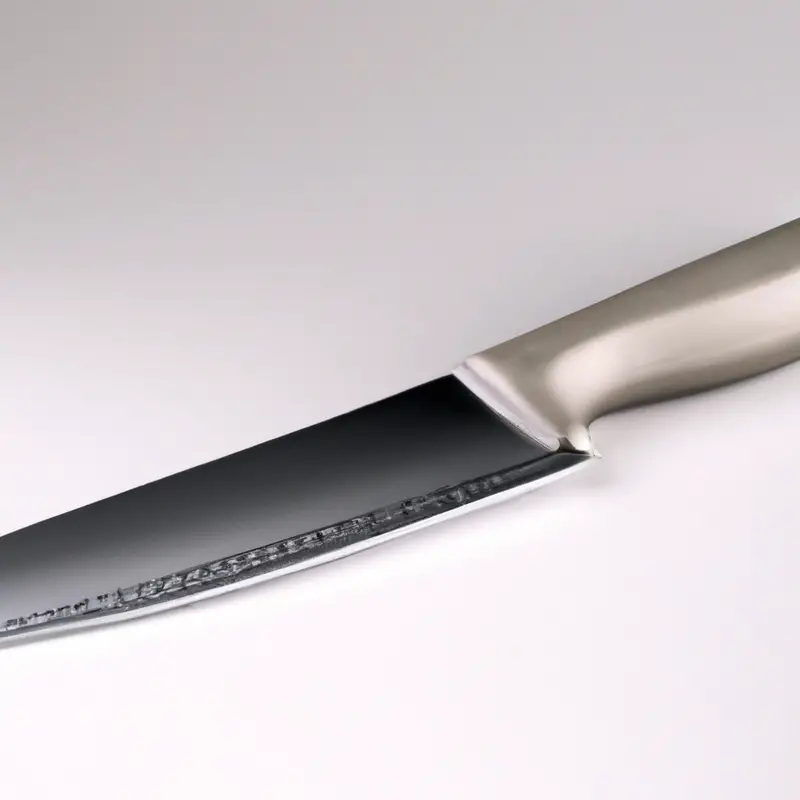
How to Minimize Hand Fatigue When Working with a Knife
To minimize hand fatigue when working with a knife, it’s important to consider the following techniques:
- Use a sharp knife to reduce the amount of pressure needed to cut.
- Hold the knife steady and use a rocking motion with your wrist and arm instead of relying on hand and finger movements.
- Take frequent breaks to rest your hand and change position.
- Use an appropriate cutting board that won’t shift or slide during use.
- Ensure proper posture and grip to avoid needless muscle tension.
By implementing these techniques and being mindful of your body, you can avoid hand fatigue when working with a knife, allowing for precise and efficient work.
Practicing Safe Cutting Techniques to Avoid Accidents
Practicing safe cutting techniques is crucial to avoid accidents when using a chef knife. Some important safety tips to keep in mind include:
- Always use a cutting board: Avoid using any other surface, including your hand or plate, as it can slip or damage your knife.
- Keep your knife sharp: A dull knife is more dangerous than a sharp knife as it requires more pressure to cut through, increasing the likelihood of slips and injuries.
- Use proper grip techniques: Hold the knife with a firm grip using your index finger and thumb on the blade’s base, and the remaining three fingers wrapped around the handle. Keep your wrist straight to maintain control.
- Position your non-dominant hand correctly: Place your fingers in a claw-like position, with your knuckles tucked and the tip of your fingers holding the food. This technique will protect your fingers and help control the food.
- Use a chopping motion: Cut through food with a gentle back-and-forth motion, keeping the tip of the knife on the cutting board. Avoid using a sawing motion or using excessive force.
By following these tips and taking the time to practice safe cutting techniques, you can minimize the risk of accidents when using a chef knife.
How to Properly Clean Your Knife to Prolong Its Lifetime
Properly cleaning your knife after every use can prolong its lifetime and maintain its performance. Here are some tips for cleaning your knife:
- Use a gentle soap and warm water to clean your knife. Avoid using harsh chemicals or abrasive sponges that can damage the blade.
- Dry your knife thoroughly with a clean towel after cleaning it. Moisture can cause rust and corrosion on the blade.
- Store your knife in a dry place away from other utensils. You can use a knife block, magnetic strip, or individual sheath to protect the blade from damage.
- Periodically oil the knife to prevent rust and maintain its condition. Use food-grade mineral oil and apply it sparingly to the blade and handle.
By following these simple steps, you can ensure a long and effective life for your chef knife. Happy cooking!
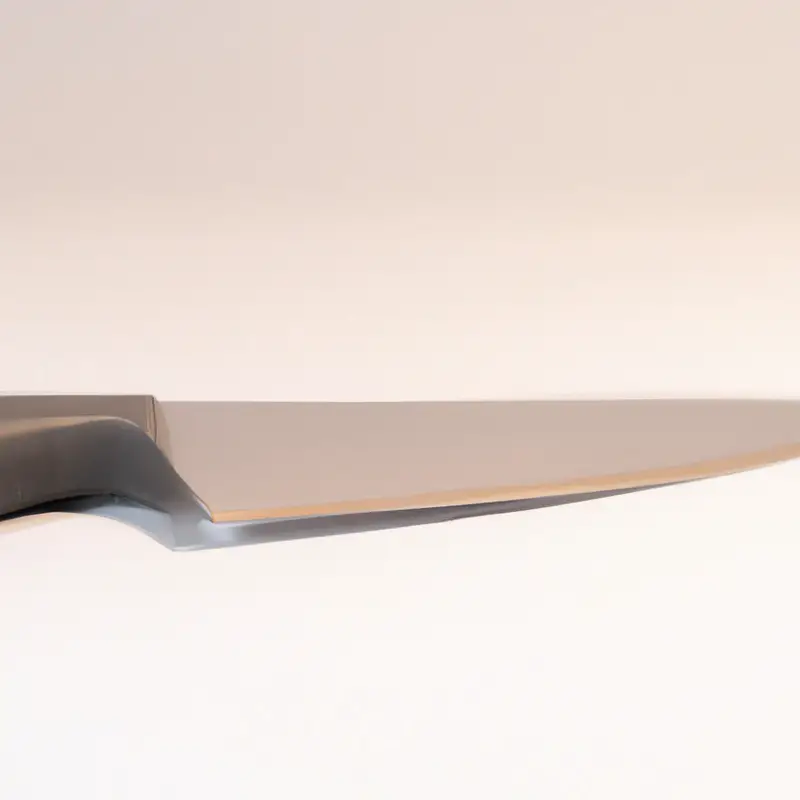
Using a Knife Sharpener for Best Performance
To maintain the best performance of your chef knife, it’s important to keep it sharp. A dull knife can be dangerous and cause less precise cuts.
Using a knife sharpener is the best way to ensure that your knife stays sharp and effective.
There are two main types of knife sharpeners: manual and electric. Manual sharpeners allow for more control and precision, while electric sharpeners are faster and require less effort.
Regardless of which type you choose, it’s important to follow the manufacturer’s instructions for best results.
Always use caution and protective gear when using a sharpener, and be sure to inspect your knife before and after sharpening for any damage or abnormalities. By regularly sharpening your knife, you can ensure that it stays in top condition for the best performance.
Final Verdict
Mastering the proper grip on a chef’s knife is essential for precision work in the kitchen. Finding the right knife, positioning your non-dominant hand, and developing a personal technique are all crucial aspects of proper knife handling.
The importance of practicing safe techniques, minimizing hand fatigue, and maintaining your knife cannot be overstated.
By following these guidelines, you can hone your skills and increase your effectiveness while minimizing the risk of accidents. Remember, a chef’s knife is a faithful companion in the kitchen, and with proper care, it can last a lifetime.
So, invest in a good quality knife, practice daily, and enjoy the art of culinary precision.

